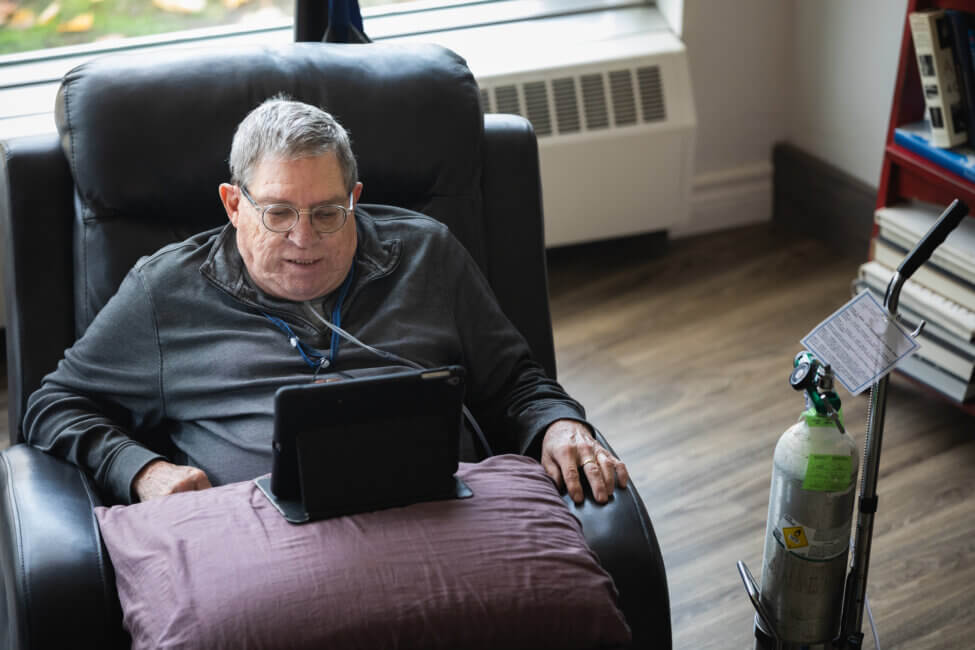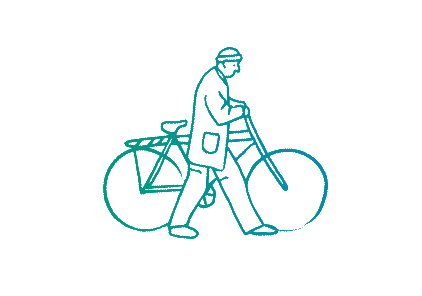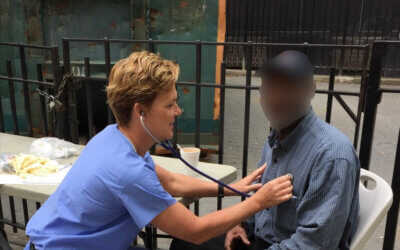At Home with COPD: The Top 10 Most Helpful Self-care Tips
Two respiratory therapists from Chapters Health System share their most helpful self-care tips with patients and families.
 Getty Image
Getty Image
Chronic obstructive pulmonary disease (COPD) refers to a group of diseases that cause airflow blockage and breathing-related problems. Emphysema and chronic bronchitis are among the most common diseases listed in this category. According to data from the American Lung Association, at least 16.4 million Americans suffer from COPD, with women being the most vulnerable to the disease. Like many chronic diseases, COPD patients may experience a wide range of complications related to their condition, especially at late stages.
“At these stages they usually have a lot of additional things, like cardiac issues, which is the biggest one. They could also have liver problems and repeat pneumonia. They need a lot of TLC,” said Tricia Livingstone, a respiratory therapist with Chapters Health System.
So, what is some of that TLC Tricia is talking about? How can patients and caregivers reduce the need for constant trips to the hospital? Here are the 10 most important self-care tips that can help.
1. COPD patients need Education on oxygen safety
Some COPD patients, especially those in later stages of the disease, may need to use portable oxygen tanks if their blood oxygen levels are too low. In this case, do not underestimate the education respiratory therapists can provide on the safe storage and use of oxygen.
- Oxygen is extremely combustible. Portable oxygen tanks should never be used near an open flame and there should be no smoking in a home where oxygen therapy is in use.
- A higher O2 level is not always best. When administering supplemental oxygen, stay within the blood oxygen level recommended by your doctor. According to the S. National Library of Medicine, oxygen saturation rates for COPD patients should be between 88 and 92 percent. Higher O2 levels usually do not help, and they can even be dangerous for some patients. Never increase your oxygen without talking to your doctor first.
- Portable oxygen tanks and the hoses that come with them present a fall risk. Falls are one of the leading causes of hospitalization for hospice patients. That’s why therapists focus heavily on educating patients and caregivers on how to properly use supplemental oxygen and ways to create a safer environment in the home.
Always consult your doctor or respiratory therapists to make sure you are safely administering supplemental oxygen.
2. COPD medication needs to be taken exactly as it’s prescribed
Whether it’s comfort medications, corticosteroids, or antibiotics, patients should always follow their prescriptions. This seems like common sense, but many patients may be reluctant to following a prescription based on several factors. Maybe they feel well enough to stop taking the medication or they simply don’t believe it provides any relief. In some cases, they may be correct, but they should always discuss it with their doctor before stopping or self-medicating. This not only prevents reoccurring symptoms but could also ward off infection and harmful side effects.
“Some of them have been on prescriptions or inhalers years and may believe they don’t provide any relief, and sometimes they don’t,” said Livingstone. “They may not be able to do the technique correctly. That’s why we sometimes switch them to nebulizer medications or use an aero chamber to make sure they get the medication.”
“Sometimes patients may need an effective dose of steroids,” said Sarah Davis, RRT, respiratory therapist with Chapters Health System. “But conditions like diabetes and osteoporosis may prohibit use.”
In short, just communicate with your doctor about any feelings you have about your medication.
3. Clean all respiratory equipment regularly
The normal human lung has several defense mechanisms against microorganisms such as bacteria. For COPD patients, those defense mechanisms are severely weakened. That’s why it is very important to regularly clean any Nebulizers, inhalers, CPAP and BiPAP machines with water and vinegar to reduce the risk of infections such as pneumonia. One study shows COPD patients are 16 times more likely to develop pneumonia, compared to individuals without the disease.
4. Keep a cool, relaxing environment in the home
Creating a cool and relaxing environment in the home can help a COPD patient relax and conserve energy, which is critically important. Use fans, music, meditation, and other techniques to help a patient stay relaxed. In fact, numerous studies have established strong links between temperature to the exacerbation of COPD. A 2009 study in New York City found the risk of hospitalization increased by more than seven percent every time the temperature increased by approximately 33 degrees Fahrenheit.
Of course, air conditioning goes a long way to maintain a cool environment in the home. That makes proper maintenance of air conditioning units, to ensure good air quality, a top priority. Replace air filters regularly and have ducts inspected and maintained to eliminate the risk of mold and mildew. Placing fans in the bathroom to ventilate the area during showers can also reduce humidity, making the air easier to breathe.
5. Practice breathing and coughing techniques
Many COPD patients struggle to open their airways and remove excessive mucus. Respiratory therapists can provide education on these different breathing and coughing techniques to help remove mucus and control shortness of breath:
- Pursed lip breathing: to practice pursed lip breathing, sit down in a chair and relax your neck and shoulder muscles. Breathe in slowly through your nose, making sure to keep your mouth closed. Then pucker your lips as if you were going to gently blow out a candle and exhale all the air in your lungs through your mouth slowly. Try to breathe out longer than your inhale. Some people find it helpful to count to themselves. Repeat the exercise until you start breathing normally.
- Diaphragmatic Breathing: Diaphragmatic breathing is intended to help you engage your diaphragm; the dome-shaped muscle located at the base of the lungs responsible for emptying the lungs.
- Controlled/deep coughing: a coughing technique intended to loosen and carry mucus out of the airways, without causing them to narrow and collapse like during an uncontrolled cough. Sit on a chair or on the edge of your bed, with both feet on the floor.
- Huff coughing: Huff coughing will also help move mucus up and out of your lungs more effectively because it keeps the airway open longer than a normal cough. It is considered an alternative to deep coughing.
6. Avoid harsh chemicals & scents
Be wary of harsh chemicals, air fresheners and scented candles that can trigger breathlessness episodes. Use non-toxic, natural cleaning products and skip the scented body products if they trigger a reaction.
7. Add an air purifier
Air purifiers remove allergens and irritants such as pet dander, dust, mold and pollen from the environment. In addition to helping patients with lung conditions, several studies have linked air purifiers with improved heart rate and blood pressure levels.
8. Cut down on the carbs
COPD patients should eat small, balanced and more frequent meals. Avoid meals that are heavy in carbohydrates. When the body metabolizes carbohydrates, it produces the most carbon dioxide for oxygen used; metabolism of fat produces the least. For some people with COPD, eating a diet with fewer carbohydrates and more protein and fat helps them breathe easier. Enjoy high-protein snacks such as cheese, crackers and nuts.
9. Drink plenty of water
Staying hydrated is important for everyone, but for COPD patients it is doubly important. A body that is dehydrated cannot function at its best. In addition to improving most bodily functions, fluids can thin mucus, making it easier to expel from the airways. If you do not have any fluid restrictions, you should drink at least six 8-ounce glasses each day.
10. Get plenty of sleep
Sleep troubles are common for COPD patients. Breathing troubles and some medications can cause patients to have trouble falling asleep and asleep. Following these tips can help COPD patients get more of the sleep they need:
- Avoid drinking (especially caffeine) and eating too much in the evening. Your body is less likely to sleep if it needs to digest.
- Use a hospital bed or recliner to sleep upright, to improve breathing.
- Avoid taking some medication that hinders sleep, such as prednisone, at night.
- Stick to a regular sleep and wake schedule to condition your body for sleep. Avoid naps late in the afternoon and limit them during the day.
As always, the care for a human being goes beyond what a doctor or nurse can provide.
“Sometimes you’re just there to listen, to understand their concerns and provide a friendly ear,” said Livingstone.
Chapters Health System has a variety of services and support for COPD patients. As always, Chapters Health is committed to serving their needs as well as the needs of our families, caregivers, health providers, partners, and communities.
For more information, please call our helpful Chapters Health and HospiceHelp24® team at 1.866.204.8611 or Contact Us.
1 Comment
Leave a Reply
Keep Exploring

















Joelpeveler
April 23, 2023 at 7:48 pmThank you for formation! Kee us updated.